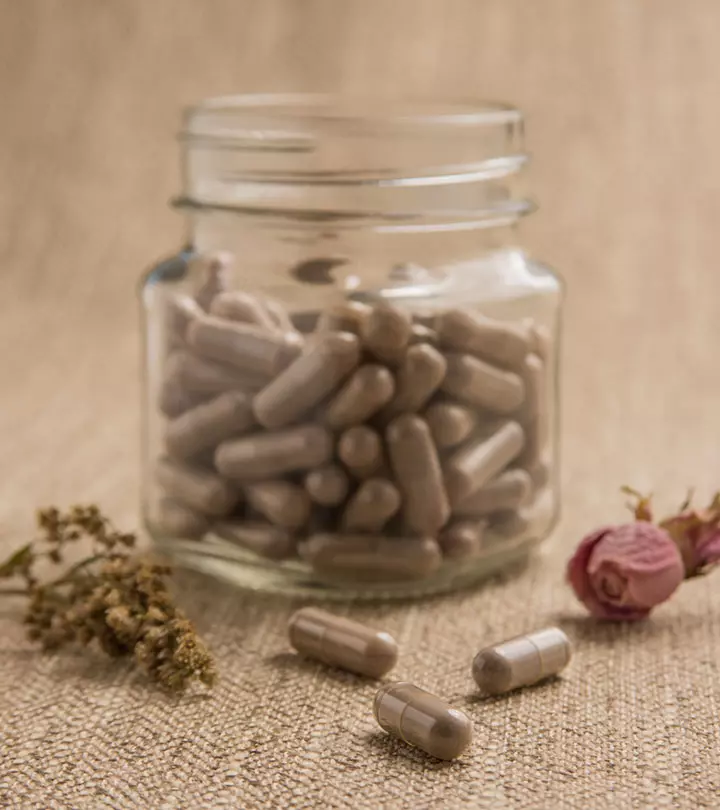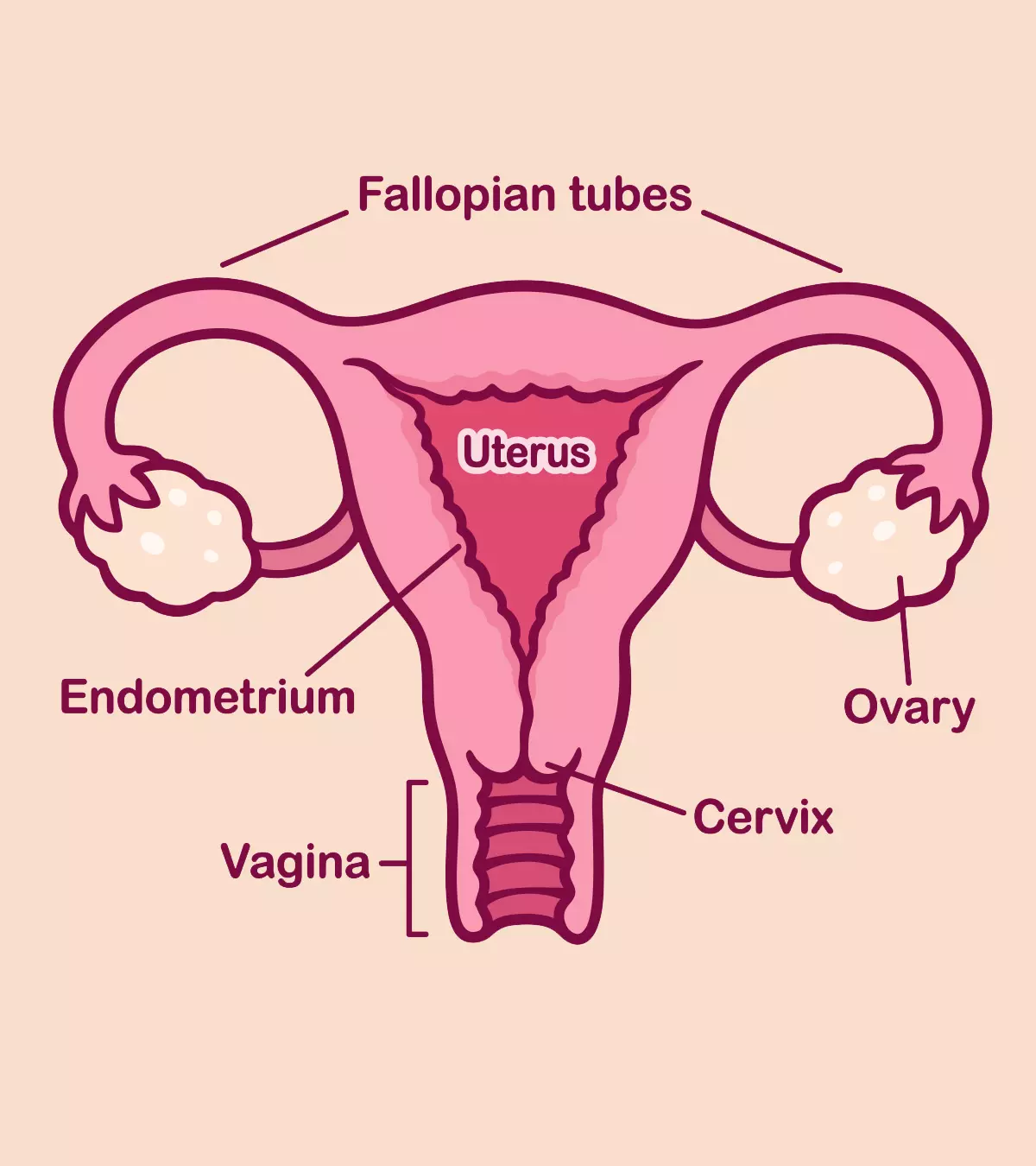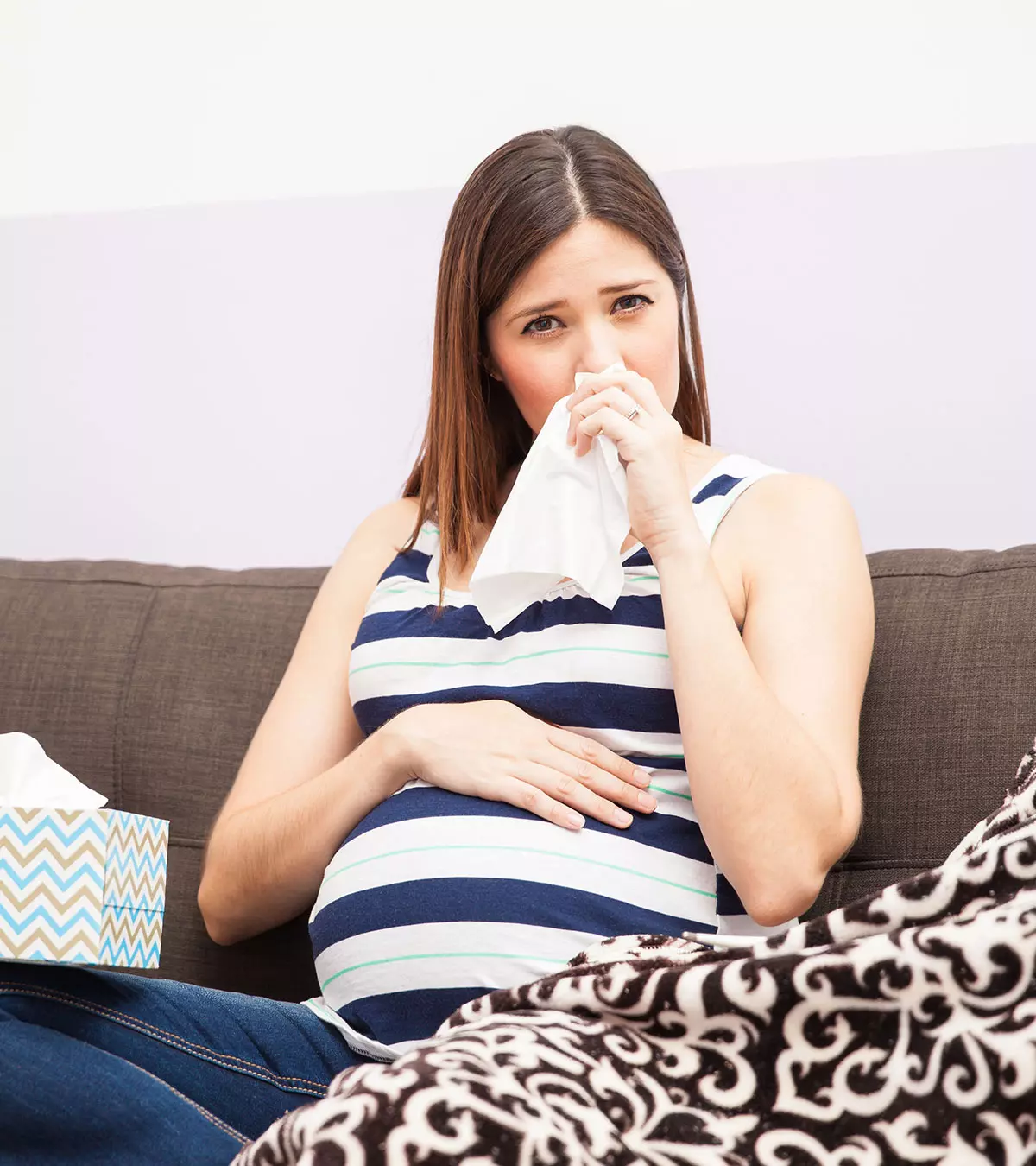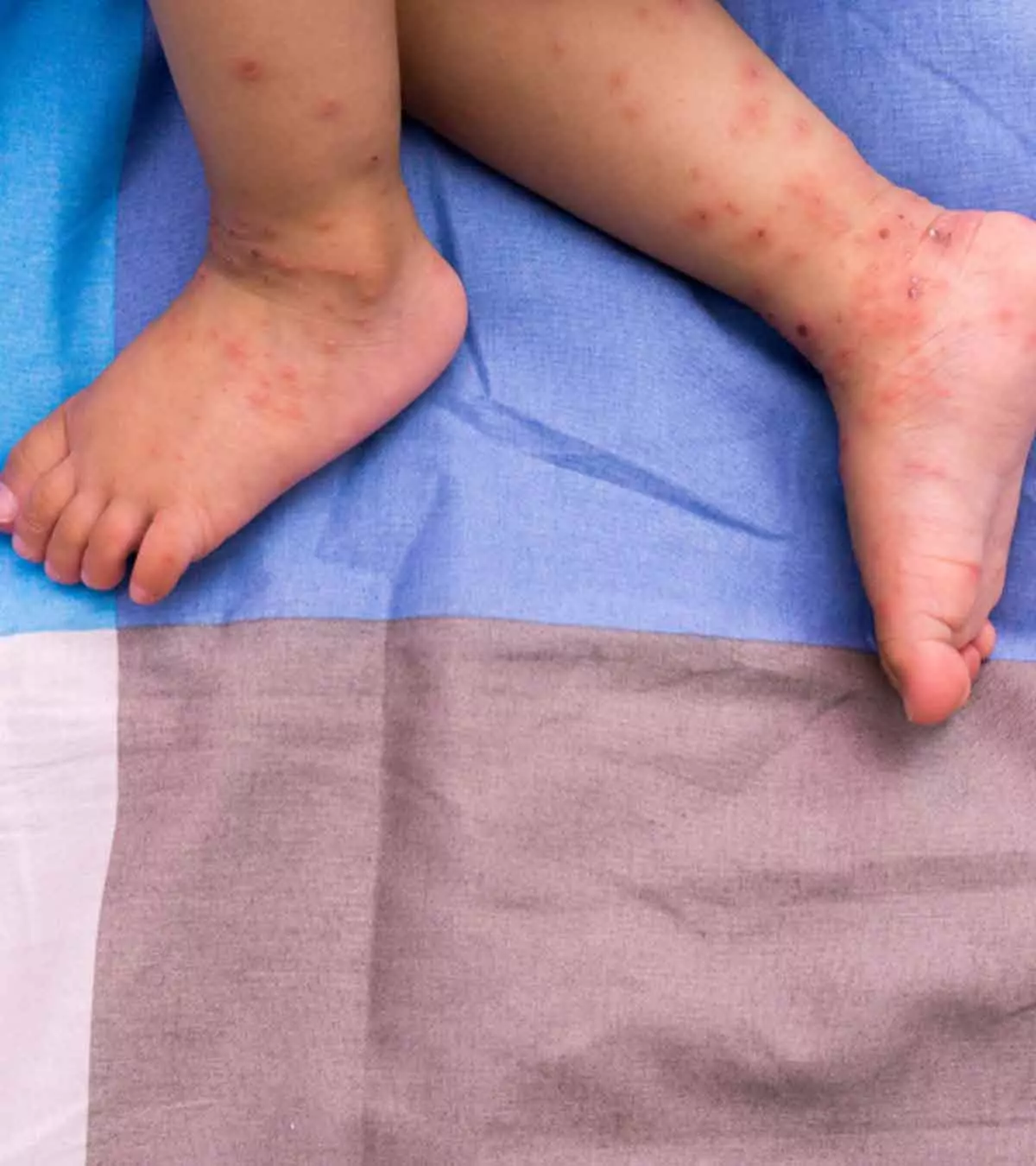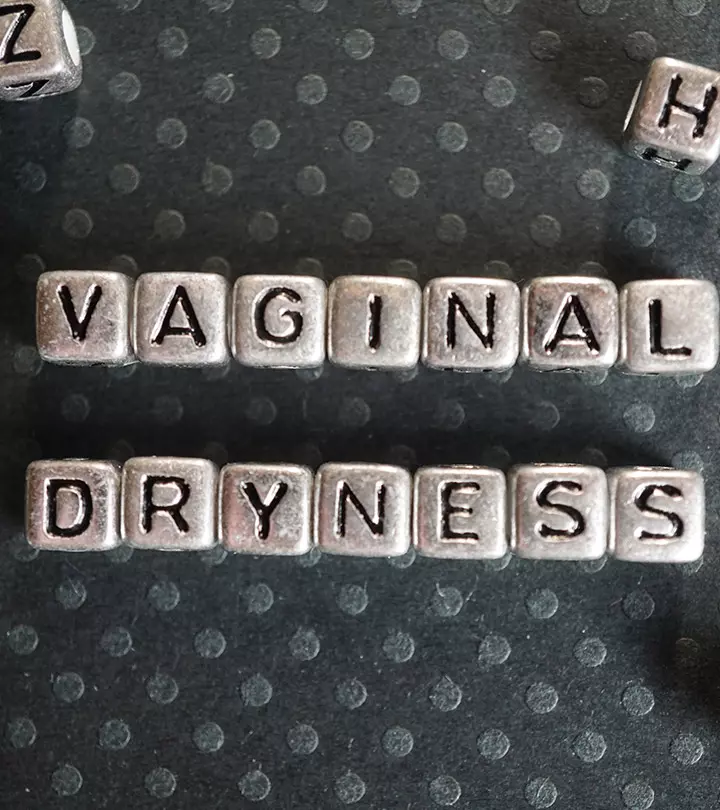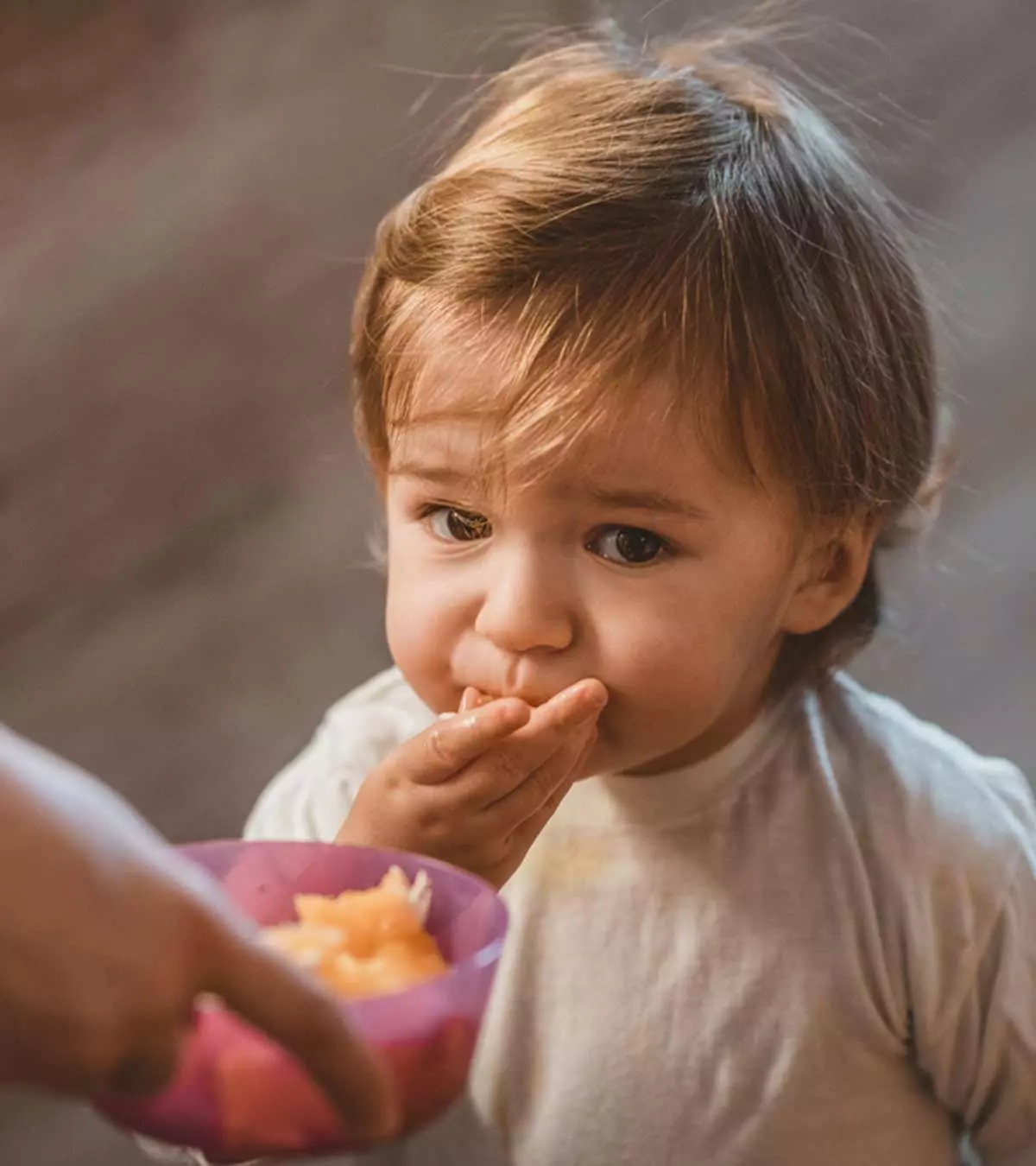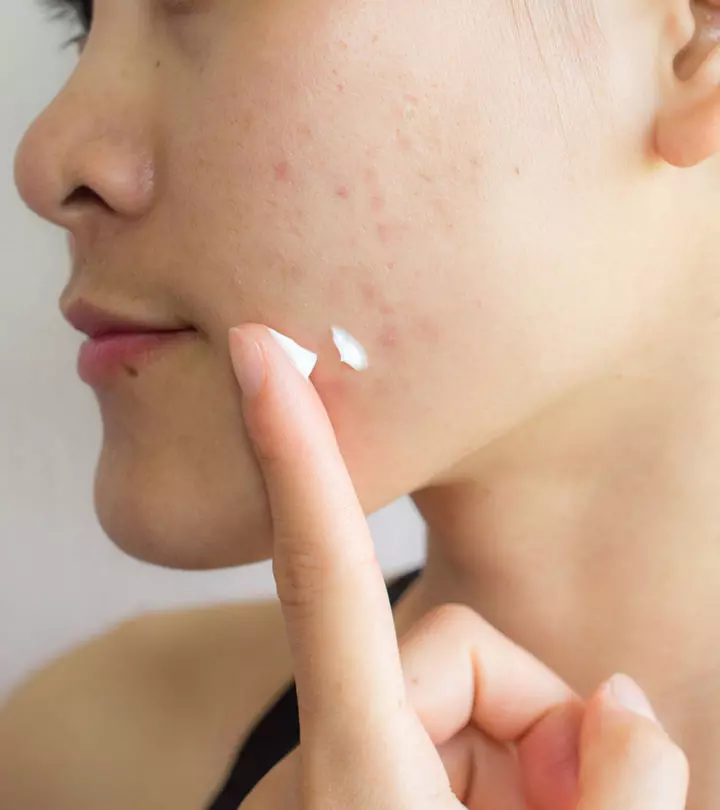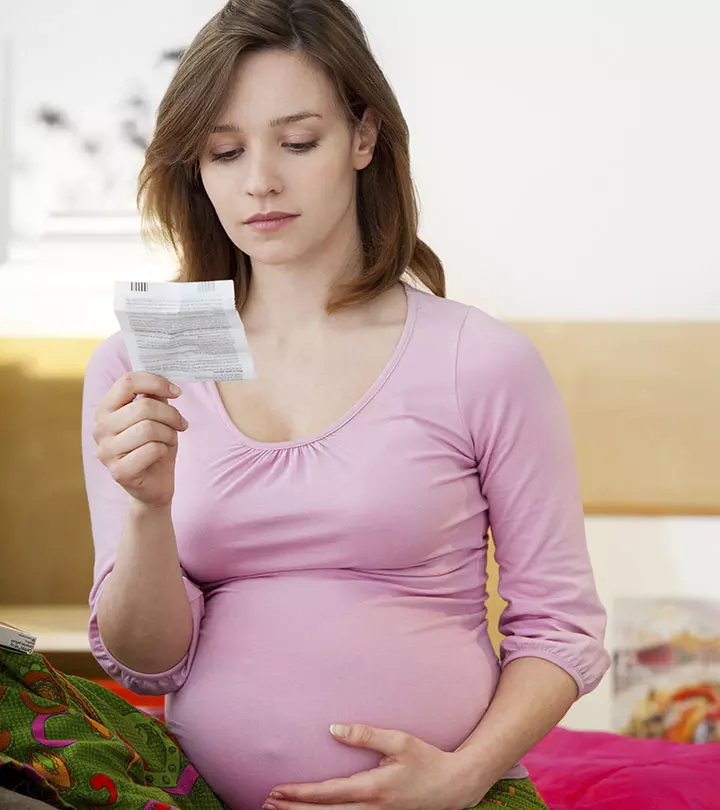
Image: ShutterStock
Baby lip blisters are common and usually resolve on their own. They are characterized by minute fluid-filled bumps on the baby’s lips and may not be visible when the lips are closed. Although a baby lip blister does not pose a threat, it is usually a subtle sign of latching problems. Identifying the underlying reason behind the baby’s lip blisters might help your doctor treat them and prevent them from recurring. Read this post to know more about what these blisters look like and their causes and management.

Key Pointers
- Lip blisters in newborns can appear as tiny bubbles, or a large band stretched over the baby’s lips.
- Cold sores or sucking can cause lip blisters in babies.
- Lip blisters are more common in breastfed babies, although they can also occur in bottle-fed babies.
- Proper latching positions and techniques can help newborns with sucking blisters.
- Always wash the baby’s bottles, pacifiers, and your hands before touching a newborn.
What Do Baby Lip Blisters Look Like?
Baby lip blisters look like small bubbles on the skin of your baby’s lips and may not be visible when the lips are closed.
They generally appear as tiny bubbles on the cupid’s bow or as a big band stretched across the lips. They are usually filled with a clear fluid. In some rare cases, they may also be filled with pus (1).
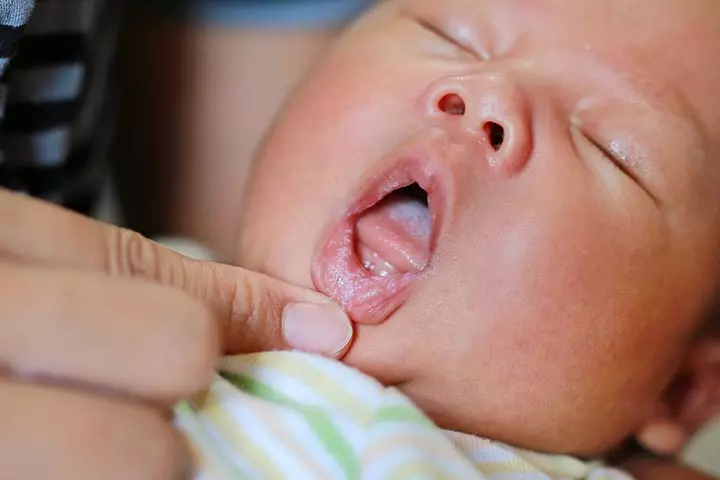
Why Do Babies Get Lip Blisters?
Baby lip blisters can be due to sucking during breastfeeding or cold sores. Knowing how lip blisters develop can help tell the difference between normal suck blisters and those that might need medical attention. Usually, suck blisters start to disappear within a few days, while cold sores can worsen and become painful (1).
According to Lisa Diard, a pediatrician at the Cleveland Clinic, “Cold sores typically look and feel different from sucking blisters. Often, instead of one large blister, cold sores are clusters of smaller blisters that break open and cause a painful sore (1).”
1. Baby suck lip/ blisters
Lip blisters caused by sucking are also known as suck blisters, friction blisters, or suck callouses. A newborn’s lips are tender and soft. While breastfeeding, the baby starts to suck vigorously and overworks their lip muscles. These lead to friction and may cause lip blisters (2). Although lip blisters are mostly seen in breastfeeding babies, they are also present in bottle-fed babies.
A case study published in the European Journal of Pediatrics showed that sucking blisters may also develop during intrauterine life as babies start the sucking action when they are still in the womb (3).
Newborn lip blisters may resolve in one or two days, and you need not worry or do something about them. However, if the lip blisters persist beyond a couple of weeks, it could signal a latching problem (4).
Also, a tongue-tie or a lip-tie in babies may prevent your baby from raising their tongue and restrict the lips’ movement, resulting in long-lasting sucking blisters. If your baby is premature, they might also need more time to learn how to latchiAttachment of the infant with the mother’s breast during breastfeeding correctly (5).
 Quick fact
Quick fact2. Cold sores
According to a study conducted by multiple institutions, it was estimated that the neonatal herpes simplex virus (HSV) infection incidence rate ranges between one in 3000 to one in 20,000 live births (6). Cold sores caused by the herpes simplex virusi can cause blisters on the baby’s lips. Unlike the suck blisters, they might be painful and filled with pus. Although these are found primarily in adults, babies under eight weeks are at risk of developing them, as their immune system is not fully developed (7).
Adults with the virus can infect the baby when they touch the baby’s lips or kiss them, or give them a pacifier after keeping it in their mouth.
Simon, a blogger and mother of two, shares how her son developed a blister after an unknown woman kissed him. Addressing the unknown woman in her letter, she says, “My Son developed a cold sore-like blister on his lip 10 days after your (the stranger lady) kisses. Showed up just after the perfect amount of incubation period to have received the virus…
“I’m telling you this to make you aware that your “innocent kisses” could be deadly. He, to date, appears to be doing well, minus the sore. Thank the Lord he isn’t a newborn anymore, Thank the Lord he had time on his side. But even then, he is only 3 months old. From that day, you could have given him a life sentence (i).”
Babies may also develop a fever when they have a cold sore for the first time, and the mouth area could be inflamed, leading to bad breath (7).
Some skin conditions may also cause lip blisters in babies; however, they are uncommon. These skin conditions may include allergic reactions, Hand, foot, and mouth disease (HFMD)iA contagious viral infection that causes mouth sores and hands and feet rashes , impetigoiA highly contagious and painful viral skin infection that causes red sores on the face , and oral thrushiA common fungal infection in babies caused by an overgrowth of the yeast Candida in the mouth (1).
 Quick fact
Quick factHow To Treat Baby Lip Blisters
The treatment for lip blisters in babies depends on the cause.
- If the blisters are due to sucking, then observe them for three to four days. If they reappear or do not go away on their own, identify and fix the latching problem. Here is how you can do it.
- Gently rub your nipple on your baby’s lips. This may help your baby open their mouth wide.
- Try to direct the nipple above your baby’s top lip. Also, make sure your baby’s chin is towards their chest.
- Now, aim your baby’s lower lip away from the base of your nipple. Lead your baby into the breast, chin first, and then make them latch on.
- An extended tongue and the baby’s mouth filled with your breast with the baby’s lower lip everted, are signs of a good latch (8).

- If your bottle-fed baby has suck blisters, check your feeding position, place the bottle nipple completely into your baby’s mouth, or use a paced feeding bottle until your baby becomes comfortable latching.
- If your baby’s lip blisters are still not healing, stop the bottle and give fluids to them using a cup, spoon, or syringe (9).
- You may apply a warm compress on your baby’s lips to soothe the milk blisters (10).
- Cold sores generally resolve on their own, but if your baby develops a fever or if their mouth appears inflamed, take them to your pediatrician (11).
- In case of allergic reactions, stop using any products that might be the source and consult a pediatrician for further course of action (1).
In case of oral thrush and impetigo, the baby needs medication. Therefore, taking your baby to the doctor for the proper diagnosis and treatment is necessary. HFMD does not require any treatment and is self-resolving.
How To Prevent Lip Blisters In Babies
You can prevent lip blisters and cold sores in babies by taking the following precautions (1) (11):
- Do not let family members who are infected touch or kiss the baby.
- Always wash your hands before touching the baby or their bottles and pacifiers.
- Do not share your baby’s towels or bedsheets with people who are infected.
- Apply baby-safe lip balm and a lotion with zinc oxide and sunscreen when going outside.
- Protect your baby from direct sun exposure.
- Make sure they get enough rest and are well-hydrated. Offer regular feedings to prevent dryness.
- Ensure your baby has a proper breastfeeding latch to avoid friction.
Frequently Asked Questions
1. Can pacifiers cause blisters on lips?
Aggressive sucking on pacifiers may cause lip blisters in infants. These blisters may resolve once the baby stops using pacifiers.
2. Are milk blisters painful for babies?
Milk blisters occur in lactating mothers due to the accumulation of milk under the skin. These blisters do not usually cause any discomfort to the breastfeeding baby, though.
3. Can I use Vaseline on the baby’s lip blisters?
It is better to avoid applying Vaseline (petroleum jelly) or any other topical ointment for lip blisters since the baby may accidentally ingest it, causing side effects. Consult a pediatrician to know baby-safe creams and ointments that you may use for lip blisters.
4. When should I consult a doctor for my baby’s lip blisters?
If your baby’s lip blisters persist, worsen, or are accompanied by fever or other concerning symptoms, it is essential you consult a pediatrician for further evaluation and treatment (7).
Baby lip blisters may not be obvious since they occur in the inner part of the lips. However, they are quite common and usually resolve on their own. The friction caused by sucking during breastfeeding and cold sores are the common causes of lip blisters in babies. If the blisters are accompanied by fever, consult your pediatrician since these blisters could be due to an infection. On the other hand, improve the latching technique if the blister is due to sucking while feeding. Regardless of the cause, lip blisters are common in babies and are not a cause of concern unless accompanied by other signs of infection.
Infographic: How To Manage Blisters Due To Cold Sores In Babies?
Although cold sores are uncommon in babies, they can be a symptom of a viral illness. Though severe symptoms (accompanied by fever) need medical attention, you may try to relieve your baby’s pain and discomfort by taking simple steps at home, as discussed in the infographic below.
Some thing wrong with infographic shortcode. please verify shortcode syntax
Illustration: Blisters on Baby&rsquos Lips: Causes Symptoms And Treatment

Image: Dall·E/MomJunction Design Team
Does your baby have lip blisters? Learn how to identify and treat them in this informative video. Get the answers you need to keep your baby safe and healthy.
Personal Experience: Source
MomJunction articles include first-hand experiences to provide you with better insights through real-life narratives. Here are the sources of personal accounts referenced in this article.
i. To the stranger who kissed my baby;https://simons91011.wordpress.com/2018/11/04/to-the-stranger-who-kissed-my-baby/
References
- Newborn Lip Blisters: What Causes Them and When To Seek Care.
https://health.clevelandclinic.org/newborn-lip-blister - Marvin Dannenberg et al.; (1958); The Appearance of Lips of Suckling Infants.
https://jamanetwork.com/journals/jamadermatology/article-abstract/525575 - Mustafa Aydin et al.; (2013); A rare location of sucking blister in newborn: the lips.
https://pubmed.ncbi.nlm.nih.gov/23748984/ - Newborn Care – Mouth.
https://fight.org/programs-and-services/patient-education/newborn-care-mouth/ - Breastfeeding: Ineffective Latch-On or Sucking.
https://www.cincinnatichildrens.org/health/b/ineffective-latch - Neil D. Fernandes et al.; (2025); Congenital Herpes Simplex.
https://www.ncbi.nlm.nih.gov/books/NBK507897/ - Overview: Cold sores.
https://www.ncbi.nlm.nih.gov/books/NBK525782/ - Getting a good latch.
https://womenshealth.gov/breastfeeding/learning-breastfeed/getting-good-latch - Mouth Ulcers.
https://www.stlouischildrens.org/health-resources/symptom-checker/mouth-ulcers - Jacqueline C. Kent et al.; (2015); Nipple Pain in Breastfeeding Mothers: Incidence Causes and Treatments.
https://www.ncbi.nlm.nih.gov/pmc/articles/PMC4626966/ - Cold Sores in Children: About the Herpes Simplex Virus.
https://www.healthychildren.org/English/health-issues/conditions/skin/Pages/Herpes-Simplex-Virus-Cold-Sores.aspx - Skorn Ponrartana et al.; (2014); Brown Adipose Tissue in the Buccal Fat Pad during Infancy.
https://pmc.ncbi.nlm.nih.gov/articles/PMC3931802/ - Cranial Nerves and Breastfeeding: Understanding the Connection.
https://www.okosteo.org/assets/119AC/Presentations/Saturday/OMT/0800%20-%20OMT%20breastfeeding%20infants.pdf
Community Experiences
Join the conversation and become a part of our nurturing community! Share your stories, experiences, and insights to connect with fellow parents.
Read full bio of Dr. Richard Mario Lurshay
Read full bio of Rohit Garoo
Read full bio of Dr. Ritika Shah
Read full bio of Anindita Ghatak





